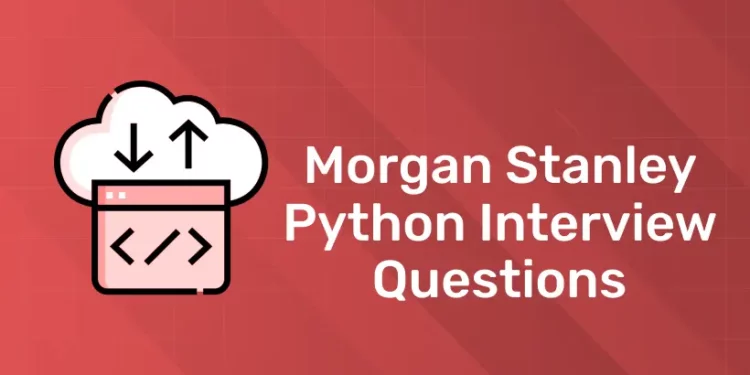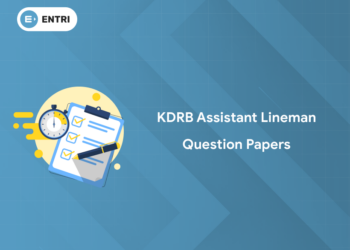Table of Contents
Morgan Stanley, one of the prominent global financial services firm which was founded in 1935 with head quarters located at New York city. This firm operates in more than 40 countries and offers knowledge in investment banking, wealth management, securities trading, and investment management. It also helps all of it’s clients to achieve their goal through strategic advice, capital raising, and customized investment solutions. Beacause of its strong emphasis on integrity, dieversity and team work makes it a globally trusted partner in the financial sector. In this article we are providing a few Morgan Stanley Python Interview Questions and Answers along with some interview preperation tips.
Get hands-on with our python course – sign up for a free demo!
Why Join Morgan Stanley?
Morgan Stanley is known for its its creativity, honesty, and dedication to quality. So by joining Morgan Stanley you are becoming a part of global leader finacial services. The company offers you to collaborate with talented professionals and allows to work on worthwhile projects. With a strong emphasis on education, sustainability and community services Morgan Stanley gives its employees the empowerment they need to succeed both personally and professionally.
Top Morgan Stanley Python Interview Questions And Answers
1: Which of the following data types is immutable in Python?
Q: What are Python’s key features that make it suitable for financial applications?
Python is well-suited for financial applications due to its
- Ease of Use and Readability
- Scalability
- Extensive Libraries
- Versatility
- Community Support
Q: How is python used in finance?
Python is used for data analysis, portfolio management, risk modeling, and automating financial processes.
Q: What libraries are commonly used for data analysis in Python?
Popular libraries include pandas for data manipulation, numpy for numerical operations, and matplotlib for visualization.
Q: Why is Python popular in finance?
For its simplicity, powerful libraries, and ability to handle large datasets efficiently.
Q: What is your experience using Python in real-world financial applications?
Be prepared to discuss past projects, such as:
- Building predictive models for stock trends.
- Automating data pipelines for portfolio analysis etc.
Q: What do you know about Morgan Stanley’s company culture and how do you see yourself fitting in?
Examine the cultural facets and basic values of Morgan Stanley, then consider how your own values fit in with them. Describe how you might enhance the culture and how it aligns with your own work philosophy.
Q: How is risk assessment handled in financial projects?
To properly detect, measure, and reduce any problems, a systematic strategy is required when evaluating risks in financial initiatives.
Identification: I start by determining every possible risk, such as operational, credit, market, and liquidity hazards. Both qualitative understanding and quantitative analysis are required for this.
Quantification: Next, I use statistical models and historical data to evaluate the likelihood and size of these risks. At this point, tools like stress testing and Value at Risk (VaR) are frequently employed.
Mitigation: I create plans to lessen the risks when they have been measured. This could entail employing derivatives for hedging, diversifying investments, or establishing stop-loss orders.
Monitoring: Last but not least, risk assessment is a continuous procedure. I guarantee constant observation and make the required strategy adjustments to react to shifting project or market conditions.
Q: How would you use Python to automate stock price retrieval?
Use APIs like Alpha Vantage, Yahoo Finance, or libraries like yfinance.
Unlock Your Coding Potential with Our Python Programming Course – Enroll Today
Q: How would you handle large financial datasets in Python?
Q: How do you remain informed about modifications to financial regulations?
I use a range of resources to be current on modifications to financial regulations:
Financial Newsletter Subscriptions: The Wall Street Journal, Bloomberg, and regulatory agencies like the SEC are among the companies whose newsletters I subscribe to.
Professional Forums and Networks: I participate in forums and professional networks where we have discussions about the latest developments and exchange perspectives on regulatory compliance.
Continuing Education: I sign up for classes, attend webinars, and seminars that offer updates on financial rules.
Q: Why is Python preferred for data analysis in finance compared to other languages like R or MATLAB?
- Ease of Integration: Python integrates well with web technologies, databases, and other programming languages.
- Versatile Ecosystem: It has extensive libraries for data manipulation (pandas), visualization (Matplotlib), and machine learning (scikit-learn).
- Cost-Effectiveness: Unlike MATLAB, Python is open-source, reducing costs.
- General-Purpose Nature: While R is powerful for statistical analysis, Python is more versatile, supporting tasks beyond data analysis, such as web development and automation.
Q: How does Python manage memory, and why is it important in financial applications?
Python uses an automatic memory management system that includes:
- Reference Counting: Each object in Python has a reference count, which increases when an object is referenced and decreases when it is dereferenced. When the count reaches zero, the object is deallocated.
- Garbage Collection: A garbage collector handles cyclic references to ensure memory is freed when objects are no longer needed.
Q: What is the difference between synchronous and asynchronous programming in Python? How is it relevant in finance?
Synchronous Programming: Tasks are executed one at a time, blocking subsequent tasks until the current task completes.
Asynchronous Programming: Allows multiple tasks to run concurrently, making better use of time and system resources.
Relevance in Finance:
Asynchronous programming (using asyncio or frameworks like FastAPI) is essential for:
-
- High-Frequency Trading: Managing multiple trade orders simultaneously.
- Real-Time Data Feeds: Fetching and processing market data without delays.
- Risk Analysis: Running simultaneous simulations across different portfolios.
Q: What is the role of Python’s logging module in financial systems?
The logging module provides a flexible framework for capturing, formatting, and managing log messages.
Role in Financial Systems:
- Auditing: Logs every transaction for compliance purposes.
- Error Tracking: Helps identify and troubleshoot issues during critical operations.
- Real-Time Monitoring: Logs system performance and trading activities for analysis.
Q: How does Python handle multithreading, and when should it be used in financial applications?
Python uses threads for concurrent execution, but the Global Interpreter Lock (GIL) restricts one thread from executing Python bytecode at a time.
- Best for I/O-bound tasks like fetching financial data from APIs or databases.
- Avoid for CPU-bound tasks; instead, use
multiprocessingor offload to Cython or NumPy for computational efficiency.]
Q: How would you ensure Python code quality in a financial application?
- Code Reviews: Peer reviews to maintain clarity and correctness.
- Linting Tools: Use tools like
pylintorflake8for style and error checks. - Unit Testing: Ensure each module functions correctly, especially for algorithms and calculations.
- Documentation: Maintain clear and concise documentation for easier debugging and handovers.
- Continuous Integration (CI): Automate testing and deployment pipelines to catch issues early.
Morgan Stanley Python Interview Preparation Tips
To prepare for Morgan Stanley Python interview it is important to have a strong knowledge of Python fundamentals, problem-solving skills, and domain-specific knowledge in finance or data analysis. Below given are a few tips to guide your preperation.
- Be clear on fundamental concepts like data types, loops, conditionals, and functions.
- Learn the basics of popular libraries like pandas, NumPy, Matplotlib, and requests.
- Understand lists, dictionaries, sets, and tuples and their use cases.
- Be familiar with object-oriented programming principles like inheritance, polymorphism, and encapsulation.
- Understand how to handle runtime errors using
try-exceptblocks effectively. - Practice reading and writing files, especially handling CSV and JSON formats.
- Learn when and how to use threads or processes for parallelism.
- Know how they work and their real-world applications.
- Be aware of how efficient your code is in terms of time and space.
- Study the use of Python in data analysis, financial modeling, and real-time trading.
- Understand how to use Python’s
loggingmodule for debugging and system monitoring. - Familiarize yourself with common design patterns, especially singleton and factory patterns.
- Financial firms often expect Python developers to know basic database operations.
- Solve Python problems on platforms like LeetCode, HackerRank, or CodeSignal.
- Know the basics of Git for managing code repositories during team projects.
Unlock Your Coding Potential with Our Python Programming Course – Enroll Today










